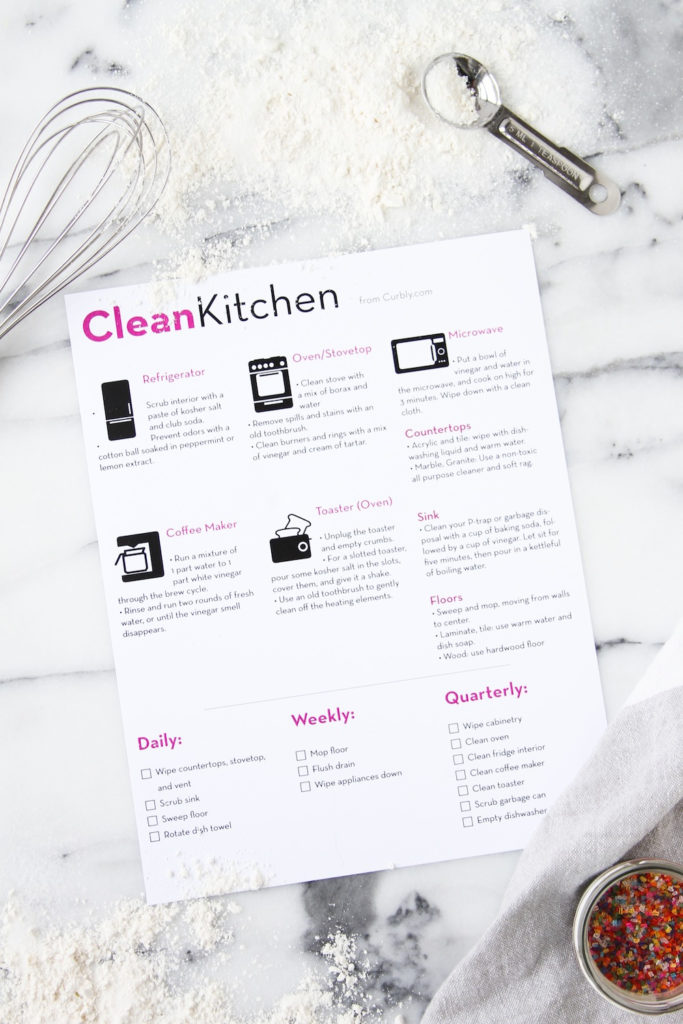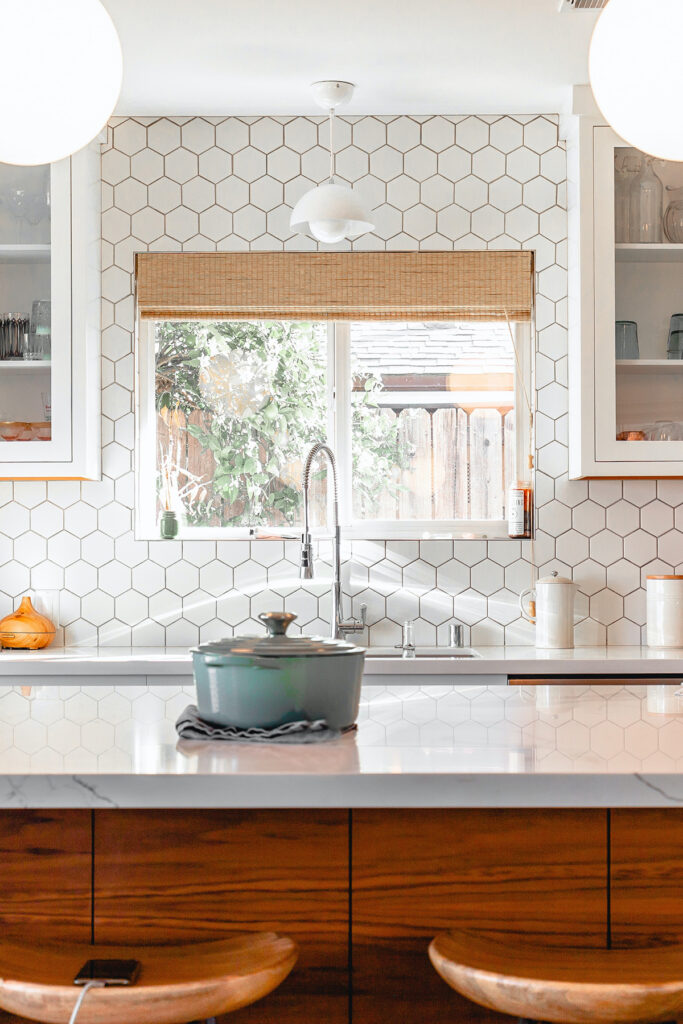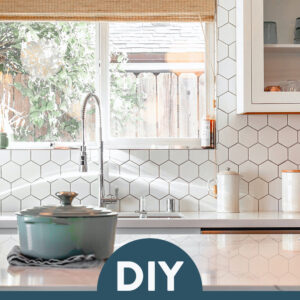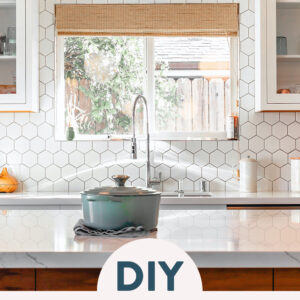You know when your house needs cleaning. Your spouse or partner, kids, friends, or worst, mother-in-law, may have a different opinion, but you know how much dirt and disorganization your home can handle. One day, you’ll walk into a room, and say “Yep, it’s time to clean.” Maybe once a day, a few times a week, or twice a month, but it’ll happen. The kitchen is a great place to start.
With all the cooking and meal preparation that takes place in the kitchen, it can quickly become dirty and cluttered. Cleaning your kitchen regularly is essential to prevent the buildup of dirt, grease, and bacteria that can cause health problems and just be gross. In this blog post, we will discuss the best way to clean a kitchen, top-to-bottom!
The Curbly Clean Kitchen Schedule
Here’s a rough idea of how often you should be doing the various kitchen cleaning tasks, but keep in mind every household is different. Pets, kids, work schedules, and resources all play a part, so just do your best!
Daily
- Declutter the kitchen
Before you begin cleaning, it’s important to declutter your kitchen. Remove any unnecessary items, such as empty containers, expired food, old mail, and appliances you no longer use. This will make cleaning easier and faster. - Clean the countertops
The countertops are one of the most frequently used areas in the kitchen, and they can quickly become dirty. Use a mild cleaner or a mixture of vinegar and water to clean the countertops. Make sure to wipe down all surfaces, including the backsplash, with a damp cloth. - Scrub sink
- Sweep floor
- Rotate dish towel
- Take out the trash, recycle, and compost
Weekly
- Clean the floors
The floors in the kitchen can quickly become dirty and sticky. Sweep or vacuum the floor to remove any loose dirt or debris. Then, use a mop or a mixture of warm water and a mild cleaner to clean the floors thoroughly. - Clean the sink and drain
The sink is a breeding ground for bacteria and germs. Use a mixture of dish soap and warm water to clean the sink thoroughly. Don’t forget to scrub the faucet and handles. You’ll also want to clean out your garbage disposal. Add a cup of baking soda, followed by a cup of white vinegar. Let that sit for about 5 minutes, then flush the drain with hot water. - Wipe appliances down
Wipe down the stovetop and the exterior surfaces of the microwave, toaster, refrigerator, and dishwasher.
Every month (or more, depending on your household)
- Clean the cabinetry and drawers
The cabinets and drawers in the kitchen can become dirty and greasy over time. Use a mixture of warm water and a mild cleaner to clean the exterior of the cabinets and drawers. For the interior, remove any items and wipe down the surfaces with a damp cloth. - Clean the oven
Ovens vary greatly, so we’re going to suggest you go straight to your manufacturer suggested cleaning method for this one. - Clean refrigerator interior
Start by removing and disposing of any old food. Take out the shelves and drawers from the refrigerator and set them aside. Using a damp cloth or sponge, wipe down the interior of the refrigerator, including the walls, ceiling, and floor. You can use a mixture of water and a mild detergent to clean any stains or spills. Wash the shelves and drawers in warm, soapy water. Rinse them thoroughly and dry them with a clean towel. Use a damp cloth or sponge to wipe down the exterior of the refrigerator, including the door handles and the control panel. Once everything is dry, reassemble the refrigerator, including the shelves and drawers. Make sure everything is in its proper place and that the temperature settings are correct. - Clean the coffee maker
Run a mixture of 1 part water to 1 part white vinegar through the brew cycle. Rinse and run two rounds of fresh water, or until the vinegar smell disappears. - Clean the toaster
Unplug the toaster. We repeat, UNPLUG the toaster. Most toasters have a crumb tray that collects crumbs. Remove the tray from the bottom of the toaster and wash the tray with warm, soapy water. Wipe down the exterior of the toaster with a damp cloth or sponge. Use a soft-bristled brush or a toothbrush to clean the interior of the toaster. Be careful not to damage the heating elements or other internal components. To clean toaster slots, you can use a soft-bristled brush or a toothbrush. Make sure all parts are thoroughly dry before reassembling the toaster. - Clean the microwave
Put a bowl of vinegar and water in the microwave, and cook on high for 3 minutes. Wipe down with a clean cloth. - Clean the garbage, recycle and compost bins
You can do with with just a little warm soapy water and a quick scrub. Then leave the bins to dry before replacing the bags. - Empty dishwasher trap
In conclusion, cleaning your kitchen regularly is a good goal for maintaining the overall cleanliness of your home. By following these simple steps, you can keep your kitchen clean and hygienic. Remember to declutter, clean the countertops and appliances, clean the sink, floors, cabinets, and drawers, and dispose of trash. With these tips, you can have a spotless kitchen in no time.

Looking for more cleaning tips and cheat sheets?
Head over to the Curbly cheat sheets collection.
More cleaning tips and tricks:
- How to Clean Like a Professional
- How to Clean Tile Grout
- How to Clean Your Stove Top: Tackle the Grease and Grime
- 4 Simple DIY Cleaning Solutions
- How to Make DIY Laundry Detergent
Have any kitchen cleaning tips you want to share? Drop them in the comments below!



I like your recommendation for cleaning the drain. One additional tip I would like to share is to use baking soda and vinegar to clear away grease, soapy residue, and other deposits.
So, twice a month, sprinkle the baking soda and pour one cup of vinegar into the kitchen sink drain. Allow it to sit for an hour or so. Then, pour a kettle full of hot water down the drain. The acetic acid in vinegar acts as a cleaning agent.
That’s a great addition! Thank you!
Good suggestions for sink and drain cleaning – thanks!
I only want to add that you should never put grease, oils, or fats down the drain These substances cling to the objects and cause huge problems for residential plumbing and municipal septic systems. Whenever you have excess oil, put it into a glass container and either recycle it (yes, you can recycle oil and grease) or you can throw it out in the garbage. Whatever you do, don’t pour it down the sink.
This kitchen cleaning checklist is quite comprehensive! In addition to the mentioned tips, here’s one more for sinks and drains: to prevent clogs and keep your drains fresh, consider using a drain strainer to catch food particles and debris before they go down the drain. Regularly empty and clean the strainer to maintain optimal water flow and prevent blockages.
I appreciate your approach to dealing with blockages naturally. While off-the-shelf drain cleaners can work quickly, they have some limitations. For instance, it’s not a good idea to use them on metal or plastic pipes because they can harm older or delicate plumbing. Also, you shouldn’t mix different types of drain cleaners because it can be unsafe and might damage your pipes, leading to corrosion and leaks.
Thank you for this comprehensive kitchen cleaning checklist! One additional tip I’ve found helpful is to regularly clean and disinfect kitchen sponges and dishcloths. These items can harbor a lot of bacteria and odors. To do this, simply soak them in a mixture of water and white vinegar or run them through the dishwasher on a hot cycle. It’s a small step that can make a big difference in maintaining a clean and hygienic kitchen. Happy cleaning, everyone!
Very Interesting.
A huge thank you for this checklist! One thing I want to add is the importance of cleaning and maintaining a dishwasher’s filter. Over time, food particles and debris can clog the filter and reduce the dishwasher’s efficiency and lead to unpleasant odors.